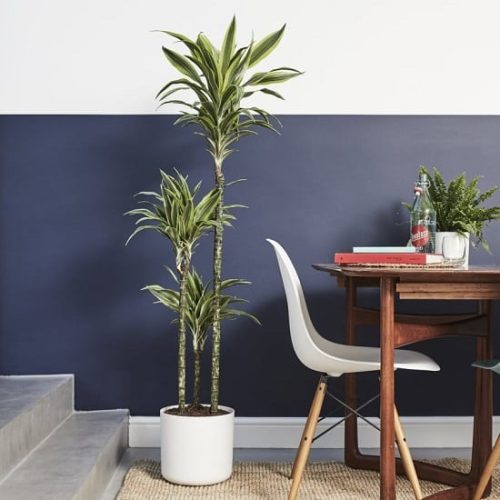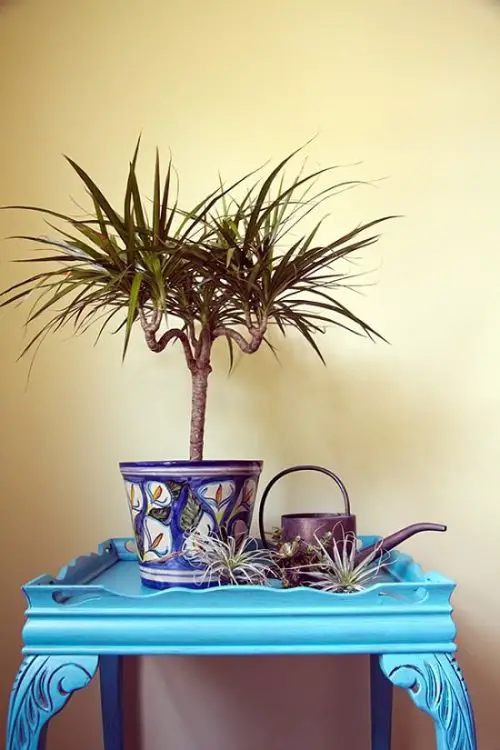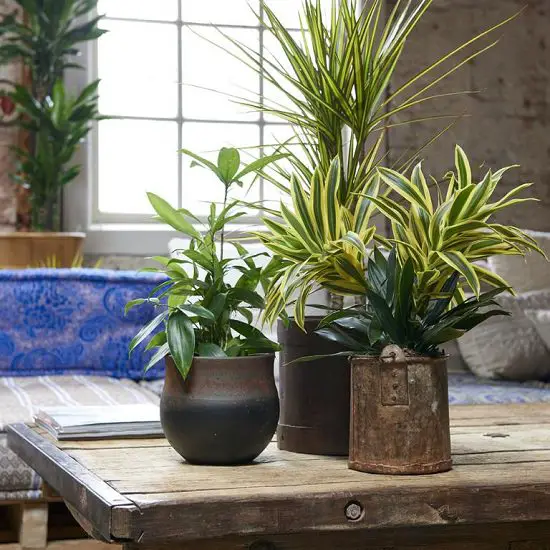Do you know all these Great Dracaena Plant Benefits that most gardeners do not know about? We bet you don’t. So read on and find out!
Here are some of the best dracaena plant benefits! Don’t know the benefits of the dracaena plant? Read on to expand your gardening knowledge so you can impress everyone and make the most of these amazing plants.
Dracaena Plant Information
- Kingdom: Plantae
- Order: Asparagales
- Family: Asparagaceae
- Subfamily: Nolinoideae
Origin and Native Region:
The genus Dracaena comprises around 120 species, and these are primarily native to Africa, southern Asia, and Central America. A few species also extend into tropical parts of Australasia.
- Growth: Dracaena plants are known for their long, strap-like leaves and woody stems. Depending on the species and cultivation methods, they can be grown as shrubs or trees. Some species can reach up to 20 meters tall in their natural habitats, but when grown as houseplants, they are usually much shorter.
- Leaves: The leaves are typically lance-shaped, spirally arranged, and can vary in color from solid green to variegated shades of red, yellow, or cream.
- Flowers: Some Dracaena species produce fragrant flowers in clusters, although it’s rarer for indoor-grown Dracaenas to flower.
Dracaena Plant Benefits
1. Air Purifying Houseplant
2. Increases Concentration and Sharpens Focus
If you ever experienced a location that had a lot of plants around, you already know what’s our point. Having plants in and around your home and office increases concentration and focus.
Houseplants improve cognitive function and enhance memory, concentration, attention, and overall mental wellness. Check out the conclusion of several more studies here.
Also, read this study that concludes that Dracaena marginata and several other indoor plants improved the concentration and focus of University students.
3. Helps in Increasing Humidity
As we all know that plants make their food through the process of photosynthesis. What most of us don’t know is that plants also release moisture into the air during this process. Around 97 percent of the water plants consume — they release.
If dry air is your concern, locate a few dracaena houseplants in that room to increase the humidity levels. This will also control many respiratory problems caused by dry air.
A study conducted by the Agricultural University of Norway found that office workers who used houseplants had fewer incidents of colds, dry skin, dry coughs, and sore throats.
4. Dracaena Absorbs Lead (Pb)
Lead is a poisonous metal that can cause serious health problems. Ingestion or breathing in lead can cause similar effects. Short-term overexposure can cause stomach pain, loss of appetite, memory loss, low concentration, and weakness.
Moreover, its prolonged high exposure can even kill you. Lead-contaminated house dust is one of the major sources of Lead poisoning in the United States. To learn about more sources, click here.
Lead particles can travel through water and air, and dracaena is one of the plants that you can grow indoors and outdoors to reduce the level of lead.
While not many studies are available to support this, one Indonesian study discusses using Dracaena marginata plants as an absorbent of lead pollutants.
5. Helps Reduce Anxiety and Stress
Study suggests that interacting with indoor plants, including Dracaena, can lead to lower cortisol levels, the stress hormone. These findings highlight the calming effects of being around greenery, which can make your living spaces feel more relaxing and peaceful.
Incorporating Dracaena plants into your environment can be a simple yet effective way to create a soothing oasis amid the hustle and bustle of daily life.
6. Protection Against Allergies
Looking for a natural shield against airborne allergies? Look no further than the Dracaena plant. With its oxygen-releasing prowess, ability to reduce CO2 levels, and knack for absorbing harmful volatile organic compounds (VOCs), the Dracaena plant acts as your ally in creating a cleaner and healthier indoor environment.
Even if you’re already using air filters and purifiers, having Dracaena plants around is like adding an extra layer of defense, ensuring that the air you breathe remains as allergen-free as possible.
Dracaena Plant Facts
- Ancient Resin: The resin of some Dracaena species, particularly Dracaena draco from the Canary Islands, is called “dragon’s blood.” In ancient times, this deep red resin was used not only as medicine but also as a dye, incense, and varnish.
- Not True Bamboo: Dracaena sanderiana, commonly known as Lucky Bamboo, isn’t bamboo at all. Its appearance has led to the common name, but it is firmly in the Dracaena genus.
- Air-Purifying Qualities: Some Dracaena species, like Dracaena fragrans, are on NASA’s list of air-purifying plants. They can remove harmful chemicals like formaldehyde, benzene, toluene, and xylene from the air.
- Pet Caution: Dracaena plants are toxic to dogs and cats. If ingested, they can cause vomiting, salivation, and dilated pupils in cats. It’s advisable to keep these plants out of reach of pets.
- Diverse Habitats: While commonly associated with tropical climates, Dracaena species can be found in various settings, from mountain regions in East Africa to desert conditions in western North America.
- Feng Shui Plant: Dracaena sanderiana, or Lucky Bamboo, is popular in Feng Shui practices. It’s believed to bring good luck, prosperity, and positive energy. The number of stalks it has can represent different kinds of luck.
- Varied Growth: Depending on the species and the growing conditions, Dracaena can be a small potted plant or grow into a tall tree. In natural conditions, some species can reach up to 20 meters tall.
- Low Maintenance: Dracaenas are popular indoor plants because of their adaptability. They thrive in a range of light conditions and are somewhat drought-tolerant, which makes them suitable for those who occasionally forget to water.
- Variegated Varieties: Many Dracaena species have variegated varieties that are highly sought after for ornamental purposes. These include plants with stripes, margins, or spots in colors like yellow, cream, and red.
- Lifespan: In their natural habitat, some Dracaena trees, especially Dracaena draco, can live for hundreds of years.







If the soil is dry..i have lots aloe vera plant in our backyard
Iam a precision auto mechanic in petrol n diesel Germany and Japanese vehicles maintenance and overhaul Engine repairs, am keenly interested in ur sponsorship, I have vast experience of 8 yrs working in Osaka, Japan.